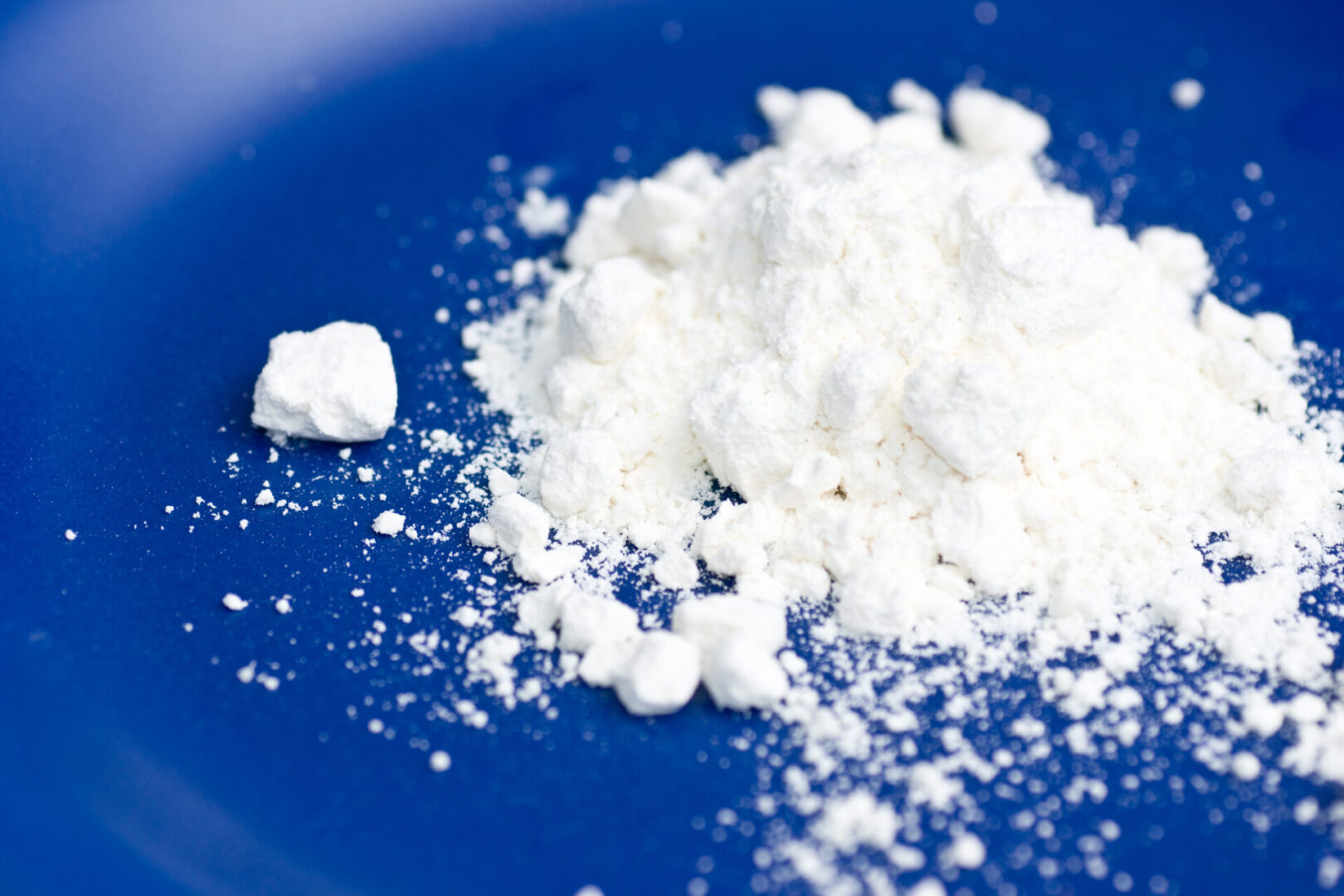ORANGE COUNTY DUI COCAINE DEFENSE ATTORNEYS
ORANGE COUNTY'S "BEST" OR "TOP-RATED" DUI DEFENSE LAWYERS RATED BY SUPER LAWYERS, ORANGE COUNTY'S "TOP-RATED" DUI DEFENSE ATTORNEYS
Cocaine-Based DUI Defense Lawyers
DRIVING UNDER THE INFLUENCE OF COCAINE - DUI COCAINE
Cocaine is a white to light brown crystalline powder that is produced by extracting and refining coca leaves. Cocaine is commonly referred to as: coke, snow, flake, blow, cane, dust, shake, toot, nose candy, or white lady.
Crack is the street name given to cocaine that has been reprocessed by adding baking soda to liquefied cocaine and heating it until the free-base cocaine precipitates into small pellets. The mixture is cooled and filtered, and then the “rocks” are scraped and then smoked in a crack pipe. Crack is also often called rock, or free-base.

Cocaine was probably most popular in the 1970s and 1980s, prior to the introduction and then mass production of the cheaper alternative, methamphetamine, which took the country by storm in the 1990s. Cocaine, being more expensive because it was becoming harder to import from cocaine producing countries, was being replaced by methamphetamine, which could be homegrown in secret, underground laboratories and sold at cheaper prices than cocaine.
Cocaine is not too dissimilar from methamphetamine in that they are both CNS Stimulants and produce euphoria, but can also produce extreme agitation, paranoia, or even extreme aggression, which can often cause users to respond to everyday traffic conditions with erratic maneuvers that cause them to get stopped for suspicion of DUI Cocaine.

ORANGE COUNTY DUI COCAINE-CRACK DEFENSE ATTORNEYS
As mentioned, the Orange County District Attorney’s Office has a team of “specially trained” DUI-Drug Prosecutors. They take DUI Cocaine and/or DUI Crack very seriously. Therefore, if you are faced with a DUI Cocaine or DUI Crack charge out of the County of Orange, contact a DUI Cocaine or DUI Crack Defense Attorney Peter Iocona, Attorney at Law and one of the Orange County DUI Cocaine Defense Attorneys from The SoCal Law Network to defend you. The consultation is free, so please do not delay and call today.
NHTSA DRUGS AND HUMAN PERFORMANCE FACT SHEETS
Cocaine
Cocaine hydrochloride is a white to light brown crystalline powder, shiny rather than dull in appearance. Cocaine base is white to beige in color; waxy/soapy to flaky solid chunks.
Synonyms
Methylbenzoylecgonine. Cocaine hydrochloride: coke, snow, flake, blow, cane, dust, shake, toot, nose candy, white lady. Cocaine base: crack, rock, free-base.
Source
Naturally derived CNS stimulant extracted and refined from the leaves of the coca plant (Erythroxylon coca), grown primarily in the Andean region of South America and to a lesser extent in India, Africa and Indonesia. The picked coca leaves are dried in the open air and then “stomped” as part of the process to extract the alkaloid, resulting in coca paste and eventually cocaine hydrochloride. It is illegal to possess and sell cocaine in the U.S. and cocaine is a Schedule II controlled substance. “Crack” is the street name given to cocaine that has been processed from cocaine hydrochloride. It is prepared by adding baking soda to aqueous cocaine hydrochloride and heating it until the free-base cocaine precipitates into small pellets. The mixture is cooled and filtered, and then the “rocks” are smoked in a crack pipe.
Drug Class
CNS stimulant, local anesthetic.
Medical and Recreational Uses
Minor use as a topical local anesthetic for ear, nose and throat surgery. Traditionally, the coca leaves are chewed or brewed into a tea for refreshment and to relieve fatigue. Recreationally, cocaine is used to increase alertness, relieve fatigue, feel stronger and more decisive, and is abused for its intense euphoric effects.
Potency, Purity and Dose
In ear, nose and throat surgery cocaine is commercially supplied as the hydrochloride salt in a 40 or 100 mg/mL solution. Depending on the demographic region, street purity of cocaine hydrochloride can range from 20-95%, while that of crack cocaine is 20-80%. The hydrochloride powder is often diluted with a variety of substances such as sugars for bulk (lactose, sucrose, inositol, mannitol), other CNS stimulants (caffeine, ephedrine, phenylpropanolamine), or other local anesthetics (lidocaine, procaine, benzocaine). Commonly abused doses are 10-120 mg. Repeated doses are frequently taken to avoid the dysphoric crash that often follows the initial intense euphoric effects. Cocaine is frequently used in combination with other drugs; injected with heroin (“speedball”) or taken with alcohol to reduce irritability; smoked with phencyclidine (“tick”); and smoked in marijuana blunts (“turbo”).
Route of Administration
Topically applied for use as a local anesthetic. Recreationally, coca leaves can be chewed, however, cocaine abusers typically smoke “crack” in a glass pipe or inject the hydrochloride salt intravenously. Cocaine hydrochloride can be smoked to some effect but this is very inefficient as the powder tends to burn rather than vaporize. Snorting (insufflation/intranasal) is also popular. Subcutaneous injection (skin-popping) is rarely used.
Pharmacodynamics
Cocaine is a strong CNS stimulant that interferes with the reabsorption process of catecholamines, particularly dopamine, a chemical messenger associated with pleasure and movement. Cocaine prevents the reuptake of dopamine by blocking the dopamine transporter which leads to increased extracellular dopamine, resulting in chronic stimulation of postsynaptic dopamine receptors. This results in the euphoric ‘rush’. When dopamine levels subsequently fall, users experience a dysphoric ‘crash’. Similarly, cocaine interferes with the uptake of norepinephrine and serotonin (5-HT), leading to accumulation of these neurotransmitters at postsynaptic receptors. As a local anesthetic, cocaine reversibly blocks the initiation and conduction of the nerve impulse. Cocaine additionally produces vasoconstriction and dilated pupils.
Pharmacokinetics
Cocaine is rapidly absorbed following smoking, snorting and intravenous administration. Bioavailability is 57% following snorting and ~70% following smoking. Cocaine is 91% bound in plasma. Cocaine is extensively metabolized to a variety of compounds: benzoylecgonine, ecgonine, and ecgonine methyl ester are the major metabolites and are centrally inactive. Benzoylecgonine is produced upon loss of the methyl group and is the major urinary metabolite. Norcocaine is a very minor metabolite, but is active and neurotoxic. Cocaethylene, formed following concurrent ingestion of cocaine and alcohol, is also active and is equipotent to cocaine in blocking dopamine reuptake. The apparent half-life for cocaine is short, approximately 0.8 ± 0.2 hours, while the half-life of benzoylecgonine is 6 hours.
Molecular Interactions / Receptor Chemistry
The cytochrome P450 3A4 isoenzyme is responsible for the N-demethylation of cocaine to norcocaine. Potential inhibitors of the 3A4 isoenzyme could decrease the rate of drug elimination if administered concurrently, while potential inducers could increase the rate of drug elimination. Cocaine itself is an inhibitor of the CYP2D6 isoform.
Blood to Plasma Concentration Ratio
averages ~ 1.0
Interpretation of Blood Concentrations
The presence of cocaine at a given blood concentration cannot usually be associated with a degree of impairment or a specific effect for a given individual without additional information. This is due to many factors, including individual levels of tolerance to the drug and artifactual changes in cocaine concentrations on storage. There is a large overlap between therapeutic, toxic and lethal cocaine concentrations and adverse reactions have been reported after prolonged use even with no measurable parent drug in the blood. Typical concentrations in abuse range from 0-1mg/L, however, concentrations up to 5mg/L and higher are survivable in tolerant individuals. After single doses of cocaine, plasma concentration typically average 0.2-0.4 mg/L. Repeated doses of cocaine may result in concentrations greater than 0.75 mg/L.
Following intranasal administration of 106 mg, peak plasma concentrations of cocaine averaged 0.22 mg/L at 30 minutes, while benzoylecgonine concentrations averaged 0.61 mg/L at 3 hours. Oral administration of 140 mg/70 kg cocaine resulted in peak plasma concentrations averaging 0.21 mg/L of cocaine at 1 hour. Single 32 mg intravenous doses of cocaine produced an average peak plasma concentration of 0.31 mg/L of cocaine within 5 minutes. Smoking 50 mg of cocaine base resulted in peak plasma cocaine concentrations averaging 0.23 mg/L at ~ 45 minutes and 0.15 mg/L of benzoylecgonine at 1.5 hours.
Interpretation of Urine Test Results
Urinary excretion is less than 2% for unchanged cocaine, 26-39% for benzoylecgonine, and 18-22% for ecgonine methyl ester. 64-69% of the initial dose is recovered after 3 days. Very low concentrations of cocaine may be detected in urine during the initial few hours, however, benzoylecgonine persists in urine at detectable concentrations from 2-4 days. Chronic, heavy use of cocaine can result in detectable amounts of benzoylecgonine in urine for up to 10 days following a binge.
Effects
Early phase – Psychological: Euphoria, excitation, feelings of well-being, general arousal, increased sexual excitement, dizziness, self-absorbed, increased focus and alertness, mental clarity, increased talkativeness, motor restlessness, offsets fatigue, improved performance in some simple tasks, and loss of appetite. Higher doses may exhibit a pattern of psychosis with confused and disoriented behavior, delusions, hallucinations, irritability, fear, paranoia, antisocial behavior, and aggressiveness. Physiological: Increased heart rate and blood pressure, increased body temperature, dilated pupils, increased light sensitivity, constriction of peripheral blood vessels, rapid speech, dyskinesia, nausea, and vomiting. Late phase - Psychological: Dysphoria, depression, agitation, nervousness, drug craving, general CNS depression, fatigue, insomnia. Physiological: Itching/picking/scratching, normal heart rate, normal pupils.
Side Effect Profile
Nervousness, restlessness, tremors, anxiety, and irritability. Chronic use may lead to personality changes, hyperactivity, psychosis, paranoia, and fear. Cocaine overdose can be characterized by agitation, enhanced reflexes, hostility, headache, tachycardia, irregular respiration, chills, nausea, vomiting, abdominal pain, rise in body temperature, hallucinations, convulsions, delirium, unconsciousness, seizures, stroke, cerebral hemorrhage, heart failure, and death from respiratory failure. Cocaine excited delirium is a syndrome often caused by excessive cocaine use, and is associated with a dissociative state, violence to persons and property, exaggerated strength, hyperthermia, cardiorespiratory arrest and sudden death.
Burnt lips and fingers from crack pipes are frequently seen, as are rashes and skin reddening from scratching. Smokers may suffer from acute respiratory problems including cough, shortness of breath, and severe chest pains with lung trauma and bleeding. Prolonged cocaine snorting can result in ulceration of the mucous membrane of the nose. The injecting drug user is at risk for transmitting or acquiring HIV infection/AIDS if needles or other injection equipment are shared.
Duration of Effects
The faster the absorption the more intense and rapid the high, but the shorter the duration of action. Injecting cocaine produces an effect within 15-30 seconds. A hit of smoked crack produces an almost immediate intense experience and will typically produce effects lasting 5-15 minutes. Similarly, snorting cocaine produces effects almost immediately and the resulting high may last 15-30 minutes. The effects onset more slowly after oral ingestion (~1 hour). General effects will persist for 1-2 hours depending on the dose and late phase effects following binge use may last several days.
Tolerance, Dependence and Withdrawal Effects
Cocaine is a powerfully addictive drug of abuse and an appreciable initial tolerance to the euphoric high may develop. Cocaine is psychologically addicting, particularly with heavy or frequent use, and possibly physically addicting as well. The short duration of effects is one reason leading to probability of addition. As effects wear off, more drug is frequently administered and a pattern of repeated use occurs. Following binge use of cocaine, the “crash” can last from 9 hours to 4 days and may consist of agitation, depressed moods, insomnia to hypersomnolence, and initial drug craving. Withdrawal symptoms can typically last from 1-3 weeks and may consist of alternating low and high drug craving, low to high anxiety, paranoia, dysphoria, depression, apathy, irritability, disorientation, hunger, fatigue, bradycardia, and long periods of sleep.
Drug Interactions
The combined use of cocaine and ethanol forms cocaethylene in the body, a substance which intensifies cocaine’s euphoric effects while possibly increasing the risk of sudden death. In laboratory studies, cocaine has been shown to partially reverse some of the adverse effects of alcohol, but may contribute to the detrimental effects of marijuana.
Performance Effects
Most laboratory-based studies have been limited by the low doses of cocaine that were allowed. At these single low doses, studies have shown performance enhancement in attentional abilities and increased behavioral and cortical arousal, but have no enhancement of effects on learning, memory, and other cognitive processes. Faster reaction times and diminished effects of fatigue have been observed. Improvements were greatest in behaviorally impaired subjects (e.g. sleep deprived, fatigued, or concurrent use of ethanol) and least improvements were observed in well-rested, healthy subjects. More deleterious effects are expected after higher doses, chronic ingestion and during drug withdrawal, and include agitation, anxiety, distress, inability to focus on divided attention tasks, inability to follow directions, confusion, hostility, time distortion, and poor balance and coordination. Laboratory studies have also demonstrated increased risk taking (rapid braking or steering) and deleterious effects on vision related to mydriasis. Self-reported increases in sensitivity to light, seeing halos around bright objects, flashes or movement of light in peripheral field, difficulty focusing, blurred vision, and glare recovery problems have been reported.
Effects on Driving
Observed signs of impairment in driving performance have included subjects speeding, losing control of their vehicle, causing collisions, turning in front of other vehicles, high-risk behavior, inattentive driving, and poor impulse control. As the effects of cocaine wear off subjects may suffer from fatigue, depression, sleepiness, and inattention. In epidemiology studies of driving under the influence cases, accidents, and fatally injured drivers, between 8-23% of subjects have had cocaine and/or metabolites detected in their blood. An examination of 253 fatally injured drivers in Wayne County, Michigan between 1996-1998, found that 10% of cases were positive for blood cocaine and/or metabolites. On review of accident and witness reports, aggressive driving (high speed and loss of vehicle control) was revealed as the most common finding. Ethanol was detected in 56% of these cases, and all of these drivers lost control of their vehicles. In Memphis, Tennessee in 1993, 13% of 150 drivers stopped for reckless driving were determined to be driving under the influence of cocaine based on observations of behavior and appearance, performance on field sobriety tests, and positive urine cocaine tests.
A 25 year-old male driver, who made an improper turn against oncoming traffic, had a blood cocaine concentration of 0.04 mg/L and 0.06 mg/L of benzoylecgonine, 2 hours after the collision. A 30 year-old female caused an accident after failing to stop at a traffic light; the driver admitted to ingesting a large amount of cocaine ~ 2.5 hours prior to the collision, and 0.32 mg/L cocaine was detected in her blood 1 hour post accident.
DEC Category
CNS stimulant
DEC Profile
Horizontal gaze nystagmus not present; vertical gaze nystagmus not present; lack of convergence not present; pupil size dilated; reaction to light slow; pulse rate elevated; blood pressure elevated; body temperature elevated. Other characteristic indicators may include excessive activity, increased alertness, talkativeness, irritability, argumentativeness, nervousness, body tremors, anxiety, redness to nasal area and runny nose.
Panel’s Assessment of Driving Risks
Single low doses of cocaine may improve mental and motor performance in persons who are fatigued or sleep deprived, however, cocaine does not necessarily enhance the performance of otherwise normal individuals. Cocaine may enhance performance of simple tasks but not complex, divided-attention tasks such as driving. Most laboratory studies have been limited by the low single doses of cocaine administered to subjects. At these low doses, most studies showed performance enhancement in attentional abilities but no effect on cognitive abilities. Significant deleterious effects are expected after higher doses, chronic ingestion, and during the crash or withdrawal phase.
References and Recommended Reading
Baselt RC. Drug effects on psychomotor performance. Biomedical Publications, Foster City, CA; pp 115-21;2001.
Brookoff D, Cook CS, Williams C, Mann CS. Testing reckless drivers for cocaine and marijuana. New Engl J Med 1994;331:518-22. Community Epidemiology Working Group, National Institute on Drug Abuse. Epidemiological trends in drug abuse; Proceedings of the Community Epidemiology Working Group, Vol 1;June 2000.
Ellinwood EH, Nikaido AM. Stimulant induced impairment: A perspective across dose and duration of use. Alcohol Drugs & Driving 1987;3(1):19-24.
Gawin FH, Kleber HD. Abstinence symptomatology and psychiatric diagnosis in cocaine abusers. Arch Gen Psych 1986;43:107-13.
Isenschmid DS. Cocaine - Effects on Human Performance and Behavior. Forens Sci Rev 2002;14(1/2):61-100.
Javaid JI, Fischman MW, Schuster H, Dekirmenjian H, Davis JM. Cocaine plasma concentration: Relation to physiological and subjective effects in humans. Science 1978;202:227-8.
Jeffcoat AR, Perez-Reyes M, Hill JM, Sadler BM, Cook CE. Cocaine disposition in humans after intravenous injection, nasal insufflation (snorting), or smoking. Drug Metab Dispos 1989;17:153-9.
Marzuk PM, Tardiff K, Leon AC, Stajic M, Morgan EB, Mann JJ. Prevalence of recent cocaine use among motor vehicle fatalities in New York City. J Am Med Assoc 1990;263:250-6.
Physicians’ Desk Reference, Medical Economics Company, Montvale, NJ, 2002
Satel SL, Price LH, Palumbo J, McDougle CJ, Krystal JH, Gawin F, Charney DS, Heninger GR, Kleber HD. Clinical phenomenology and neurobiology of cocaine abstinence: A prospective inpatient study. Am J Psychiatry1991;148(12):1712-6.
Siegel R. Cocaine use and driving behavior. Alcohol Drugs and Driving 1987;3(1):1-7.
Stillman R, Jones RT, Moore D, Walker J, Welm S. Improved performance 4 hours after cocaine. Psychopharmacol 1993;110:415-20.
Van Dyke C, Ungerer J, Jatlow P, Barash PG, Byck R. Oral cocaine plasma concentrations and central effects. Science 1978;200:211-3.
Weddington WW, Brown BS, Haertzen CA, Cone EJ, Dax EM, Herning RI, Michaelson BS. Changes in mood, craving, and sleep during short-term abstinence reported by male cocaine addicts. Arch Gen Psych 1990;47:861-7.
Website: NHTSA DRUGS AND HUMAN PERFORMANCE FACT SHEETS - COCAINE
ORANGE COUNTY DUI COCAINE DEFENSE ATTORNEYS
If you were arrested for DUI Cocaine or DUI Crack Cocaine in Orange County, California, contact Orange County DUI Cocaine Defense Attorney Peter F. Iocona, Attorney at Law and one of the Orange County DUI Cocaine Defense Lawyers from The SoCal Law Network for a free DUI Cocaine Consultation.
Orange County DUI Attorneys Providing DUI Defense in Orange County - Laguna Hills, Laguna Beach, Orange
CALL NOW!
FREE CONSULTATION: (949) 235-2250



